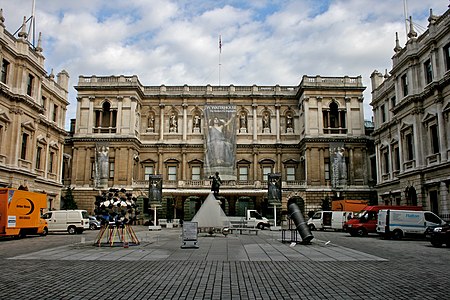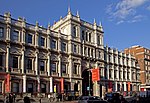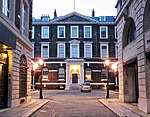Royal Academy of Arts
1768 establishments in Great BritainAcademies of artsArt museums and galleries in LondonArt museums established in 1768Art schools in London ... and 10 more
Art societiesArts organizations established in the 18th centuryBuildings and structures in the City of WestminsterEducation in the City of WestminsterEngvarB from May 2016Learned societies of the United KingdomMuseums in the City of WestminsterOrganizations established in 1768PiccadillyRoyal Academy

The Royal Academy of Arts (RA) is an art institution based in Burlington House on Piccadilly in London. Founded in 1768, it has a unique position as an independent, privately funded institution led by eminent artists and architects. Its purpose is to promote the creation, enjoyment and appreciation of the visual arts through exhibitions, education and debate.
Excerpt from the Wikipedia article Royal Academy of Arts (License: CC BY-SA 3.0, Authors, Images).Royal Academy of Arts
Piccadilly, City of Westminster Mayfair
Geographical coordinates (GPS) Address Phone number Website External links Nearby Places Show on map
Geographical coordinates (GPS)
| Latitude | Longitude |
|---|---|
| N 51.509166666667 ° | E -0.13944444444444 ° |
Address
Royal Academy of Arts (RA)
Piccadilly
W1J 0BD City of Westminster, Mayfair
England, United Kingdom
Open on Google Maps










